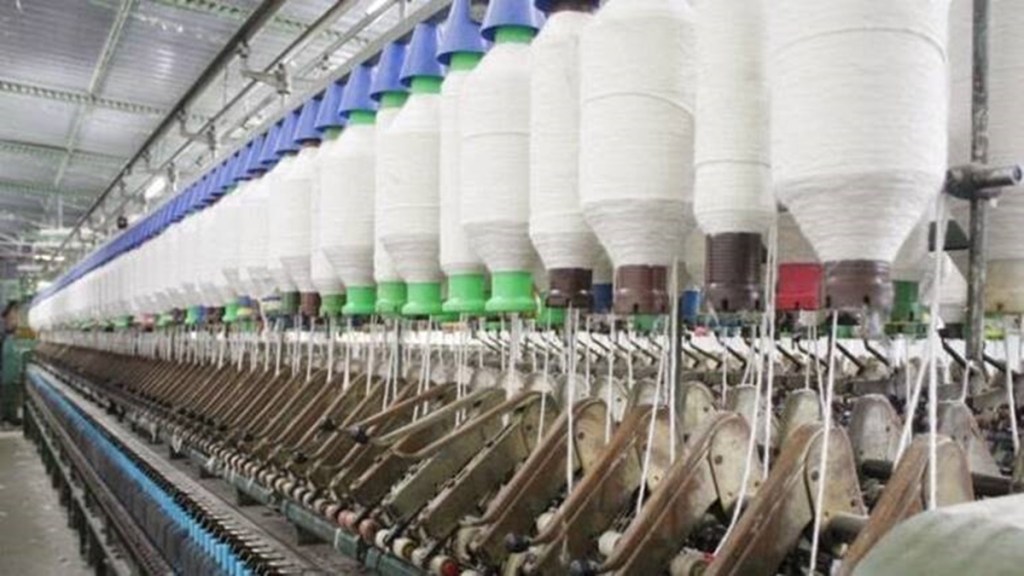India has almost everything it takes for exponential growth in the textiles industry, but that has not really been happening. The industry holds immense potential and has still has been generating the largest employment opportunities in our manufacturing sector, contributing significantly to our exports and, above all, meeting one of the basic needs of the masses. Given the role that textiles had played in our Freedom Movement, the 75th year of independence may be an appropriate occasion to examine what holds the industry back.
We’re currently the largest producer of cotton and the second largest in manmade fibres globally. Despite the Covid-19 pandemic, we continue to have a relatively high GDP growth, a large and young workforce, and a large middle class with increasing appetite for lifestyle products. There has also been a huge expansion of organised retailing in recent years and textiles are a major product group on display. But all these have not really delivered commensurate growth to the textiles industry.
Also read: NBFC bad loans rising
On the policy front, successive governments seem to have approached this industry with a preconceived notion that small is beautiful. Experiences of countries which have actually achieved higher textile growth have shown us, instead, that scale is efficient. For around two decades from the mid 60s, expansion of the organised weaving industry was restricted; they were permitted to install a new loom only after scrapping an old one, so that the expanding demand could be reserved for the decentralised sectors-handlooms and power looms-which consisted of small units and were perceived to be more labour-intensive. Given the differences in productivity, investment potential and return on investment (ROI), this was almost similar to restricting the automobile industry to provide growth opportunities for bullock carts!
Decentralised sectors involve the livelihood of millions of workers and traditional artisans as well as their valuable heritage, and these need to be sustained. But countries like Pakistan, Bangladesh and Sri Lanka, which share the same textile heritage as ours, have been able to utilise technology more effectively and have all achieved significantly higher growth than ours. Importantly, their employment opportunities in this industry have also grown substantially.
What is not commercially viable cannot be sustained in the market place, however valuable it may otherwise be. We need to retrain the workers in the unviable segments and redeploy both the workforce and resources in more viable segments. Sustaining heritage is important, but should be addressed outside the marketplace, or approached through the creation of niche and commercially viable opportunities.
Also read: Commodity prices may fall further
Technology has played its due role in our textiles production only in the case of spinning, where over 85% of production is in the organised sector. We are currently the second-largest producer and the largest exporter of yarn in the world. In fabrics, around 90% of our production is still in the decentralised sub-sectors and in garments, around two-thirds of our units continue in the SME sector.
When the process of phasing out bilateral quotas under the Multi Fibre Arrangement (MFA) began in 1995, we were hopeful of expanding our exports considerably since quotas had been severely restricting our exports during the MFA regime of 1974-94. At that time, most of the gains were snatched away by countries like China, Bangladesh and Sri Lanka. Why did this happen?
Even before the quota phase-out started, major textile-exporting countries started building up capacities and taking policy measures to align both production and trade to the changing needs of the free markets. China, Bangladesh, and Sri Lanka built up huge production capacities around their port cities and started sourcing raw materials from wherever they were available. By the time the phase-out programme was over in 2004, China was not only the largest exporter but also the third-largest importer of textiles globally.
In India, we kept the garment and knitting industries reserved for the small scale sector for most part of the phase-out period, preventing large-scale investments. Raw material supplies were restricted through taxation and other means. Our industry had, therefore, to depend mostly on domestic raw materials. A complicated excise regime stymied growth in some segments and encouraged evasion in others. The process of rationalising the excise regime effectively fructified only by July 2004.
On the part of the industry, there has been a reluctance to look at the whole value chain as one entity with the result that the segments often work at cross purposes and pursue conflicting interests. Many have focused on getting the benefits available for remaining small rather than on scaling up production, even after the excise reforms and introduction of subsidies under Technology Upgradation Fund Scheme (TUFS). The power loom sector continues to suffer from low scale and production on handlooms is inherently slow.
China, the largest player in global markets, is currently facing supply side problems—mainly rapidly increasing wages—and has already been outsourcing some production. Vietnam and Cambodia have been the major beneficiaries of this so far. With the second largest integrated textiles industry in the world, we surely have more potential to take over the markets that China vacates.
The writer is former secretary general, Confederation of Indian Textile Industry

